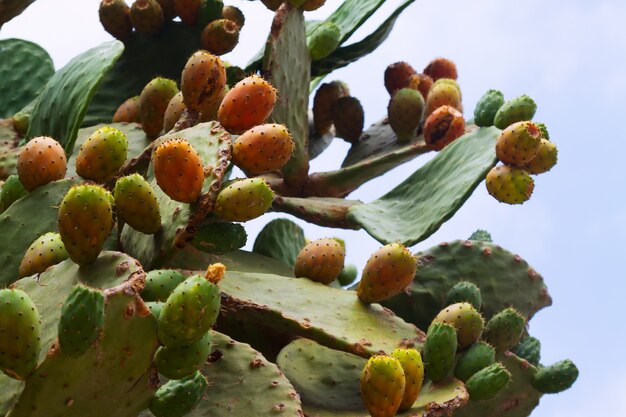
Caralluma fimbriata, commonly known as the Caralluma plant, is a cactus-like plant that thrives across India and parts of Africa. Its name comes from an Arabic phrase meaning “wound in the flesh.” In India, it’s especially common in Andhra Pradesh, including the city of Warangal, and is even known to grow along roadsides in urban areas. This resilient shrub from the Apocynaceae family can thrive in areas up to altitudes of about 1,968 feet. The plant’s edible parts include its stems, flowers, fruit, and seeds, and it has been part of the Indian diet for centuries.
### Traditional and Modern Uses of Caralluma
Historically, Caralluma has been a versatile plant in Indian culture. During times of famine, poorer communities relied on it to stave off hunger. Hunter-gatherers chewed on the plant to boost their stamina during long treks and to help combat thirst when water was scarce. Beyond its practical purposes, Caralluma was also a popular ingredient in cooking, often used in chutneys or spiced dishes. It could be eaten raw or prepared as part of a meal.
Today, Caralluma has caught the eye of the modern fitness and health industry, especially for its supposed weight-loss benefits. In traditional Indian medicine, it is still used to support holistic treatment for conditions like diabetes. Recently, diet supplement manufacturers have claimed that extracts from the plant might help reduce body fat, enhance stamina, improve blood sugar levels, and even promote heart health. Research is ongoing to validate these claims.
### Scientific Studies on Caralluma
Independent scientific studies have also examined Caralluma’s health benefits. In one study, researchers gave a group of participants Caralluma extract while another group received a placebo over 60 days. The results showed minimal weight loss or fat reduction, but the group taking the extract did experience reduced appetite and smaller waist sizes. Since waist size is sometimes used as a health indicator, this finding intrigued some scientists and healthcare professionals.
Interestingly, Caralluma’s potential benefits for heart health have generated significant interest. Studies suggest that the plant may help clear arteries of atheroma plaque, which consists of fatty deposits, calcium, and other materials that contribute to atherosclerosis. Considering the widespread issue of arterial plaque buildup due to poor diets, this finding highlights the plant’s broader health benefits.
### Caralluma vs. Other Weight-Loss Plants
Caralluma has been compared to Hoodia gordonii, another plant with appetite-suppressing qualities that grows in Southern Africa. Like Caralluma, Hoodia has been used by indigenous tribes to control hunger. However, Caralluma appears to have an edge because it not only suppresses appetite by influencing signals to the hypothalamus in the brain but also contains pregnane glycosides, substances that block fat metabolism enzymes. Hoodia, on the other hand, lacks this fat-blocking function.
### Potential Side Effects of Caralluma
While Caralluma offers potential health benefits, it is not without side effects. Some users report digestive issues such as bloating, gas, and occasional constipation, especially during the first two weeks of use as the body adjusts to the plant’s enzymatic effects. Additionally, the plant has a strong odor that some people find unpleasant and may cause mild nausea. These issues are less noticeable, however, when the plant is consumed in capsule or pill form.
Another consideration is that Caralluma’s impact on the digestive system may interact with medications or other herbal supplements. Researchers warn that there still isn’t enough data on the plant’s long-term effects, particularly for children and pregnant women. Consulting a naturopathic or Ayurvedic doctor before starting a Caralluma regimen is strongly recommended.
### Finding Quality Caralluma
For those interested in trying Caralluma, ensuring quality and purity is essential, especially when purchasing supplements. One option is to connect with a naturopathic or Ayurvedic practitioner who can recommend trusted sources. Alternatively, those who prefer a more traditional approach can try sourcing the plant itself and prepare it as it’s been done in Indian cuisine for generations.